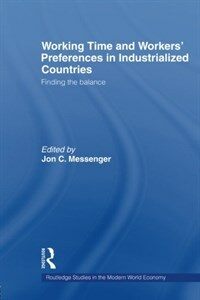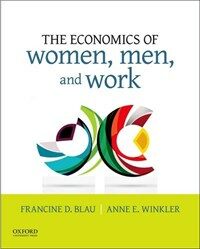단행본
Gender, inequality, and wages
- 청구기호
- 331.40973 GEN2012
- 발행사항
- Oxford : Oxford University Press, 2012
- 형태사항
- 545 p
- 서지주기
- Includes bibliographical references and index
- 일반주기
- IZA Prize in Labor Economics
- ISBN
- 9780198779971
- 키워드
- Gender, inequality, wages
소장정보
| 위치 | 등록번호 | 청구기호 / 출력 | 상태 | 반납예정일 |
|---|---|---|---|---|
이용 가능 (1) | ||||
| 한국노동연구원 | 00009190 | 대출가능 | - | |
이용 가능 (1)
- 등록번호
- 00009190
- 상태/반납예정일
- 대출가능
- -
- 위치/청구기호(출력)
- 한국노동연구원
책 소개
In all Western societies women earn lower wages on average than men. The gender wage gap has existed for years, although there have been some important changes over time. This collection of revised papers contains extensive research on progress made by women in the labor market and the characteristics and causes of remaining gender inequalities.
In all Western societies women earn lower wages on average than men. The gender wage gap has existed for many years, although there have been some important changes over time. This volume of collected papers contains extensive research on progress made by women in the labor market, and the characteristics and causes of remaining gender inequalities. It also covers other dimensions of inequality and their interplay with gender, such as family formation, wellbeing, race, and immigrant status. The author was awarded the 2010 IZA Prize in Labor Economics for this research. Part I comprises an Introduction by the Editors. Part II probes and quantifies the explanations for the gender wage gap, including differential choices made in the labor market by men and women as well as labor market discrimination and employment segregation. It also delineates how the gender wage gap has decreased over time in the United States and suggests explanations for this narrowing of the gap and the more recent slowdown in wage convergence. Part III considers international differences in the gender wage gap and wage inequality and the relationship between the two. Part IV considers a variety of indicators of gender inequality and how they have changed over time in the United States, painting a picture of significant gains in women's relative status across a number of dimensions. It also considers the trends in female labor supply and what they indicate about changing gender roles in the United States and considers a successful intervention designed to increase the relative success of academic women. Part V focuses on inequality by race and immigrant status. It considers not only race difference in wages and the differential progress made by African-American women and men in reducing the race wage gap, but also race differences in wealth which are considerably larger than differences in wages. It also examines immigrant-native differences in the use of transfer payments, and the impact of gender roles in immigrant source countries on immigrant women's labor market assimilation in the U.S. labor market.
In all Western societies women earn lower wages on average than men. The gender wage gap has existed for many years, although there have been some important changes over time. This volume of collected papers contains extensive research on progress made by women in the labor market, and the characteristics and causes of remaining gender inequalities. It also covers other dimensions of inequality and their interplay with gender, such as family formation, wellbeing, race, and immigrant status. The author was awarded the 2010 IZA Prize in Labor Economics for this research. Part I comprises an Introduction by the Editors. Part II probes and quantifies the explanations for the gender wage gap, including differential choices made in the labor market by men and women as well as labor market discrimination and employment segregation. It also delineates how the gender wage gap has decreased over time in the United States and suggests explanations for this narrowing of the gap and the more recent slowdown in wage convergence. Part III considers international differences in the gender wage gap and wage inequality and the relationship between the two. Part IV considers a variety of indicators of gender inequality and how they have changed over time in the United States, painting a picture of significant gains in women's relative status across a number of dimensions. It also considers the trends in female labor supply and what they indicate about changing gender roles in the United States and considers a successful intervention designed to increase the relative success of academic women. Part V focuses on inequality by race and immigrant status. It considers not only race difference in wages and the differential progress made by African-American women and men in reducing the race wage gap, but also race differences in wealth which are considerably larger than differences in wages. It also examines immigrant-native differences in the use of transfer payments, and the impact of gender roles in immigrant source countries on immigrant women's labor market assimilation in the U.S. labor market.



